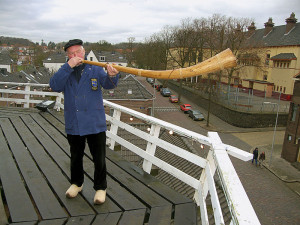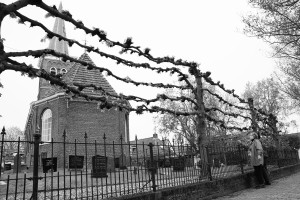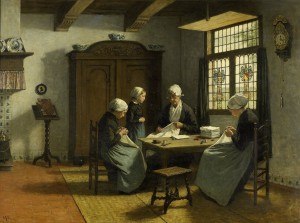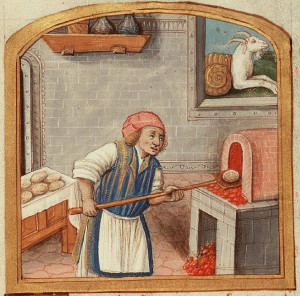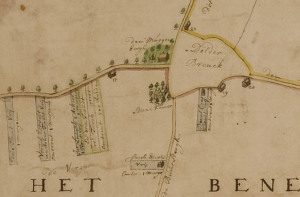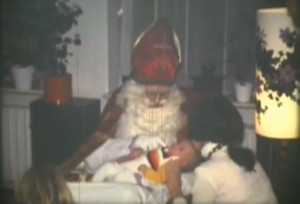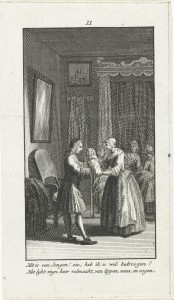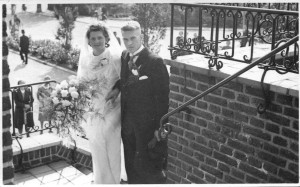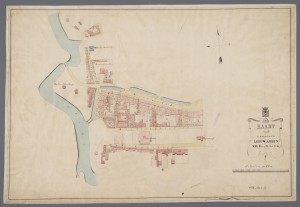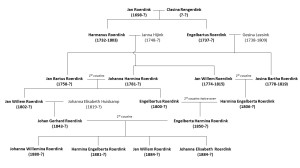Midwinterhoorn literally means "Mid winter horn." It is a wooden horn that is typical for the eastern part of the country. The horns are made of a curved branch of a tree, which is sawed in half length-wise, hollowed out and put back together with a mouth piece attached to it. In Gelderland and Overijssel, midwinterhoorns are traditionally played during the Advent season. They are often played over a well, to amplify the sound, which can carry over miles and miles. For me, … [Read more...]
Dutch terms – begraafplaats and kerkhof
A begraafplaats or kerkhof is a cemetery. Kerkhof (literally meaning "church yard") is a cemetery around the church, while a begraafplaats (literally: "burial place") is a more generic term. In the Netherlands, graves are routinely cleared after a few decades to make room for new graves. To see what graves still exist, check online cemetery websites in the Netherlands. … [Read more...]
Source – Guardianship records
In my article about the Weeskamer (orphan chamber), an institute that oversaw the estates of orphans before 1811, several people asked me what records might exist for later orphans. The richest source of information are guardianship records, which can be found in the records of the court. Court-appointed guardians After 1811, the courts oversaw the appointing of guardians. If one parent died, the surviving parent automatically became the guardian, without the need for the court to interfere. … [Read more...]
Dutch term – Wintermaand
Wintermaand (literally: Winter month) is the old word for December. … [Read more...]
Case study: Lammert Huybertsen Brink
Two years ago, I helped a client, Mr. Dennis Brink, find out exactly where his family was from. He kindly agreed to let me share our story of discovery of the origins of his immigrant ancestor, Lammert Huybertsen Brink, with you. Known information When Dennis Brink first contacted me, he provided the following information about his New Netherland ancestor, Lammert Huybertsen Brink: Lammert Huyberts from Wageningen, with wife and two children ages 2 and 3 1/2 years, sailed on the … [Read more...]
Dutch term – Sinterklaas
Sinterklaas is the Dutch name for Saint Nicholas. The American tradition of Santa Claus stems from the Dutch celebrating Sinterklaas. What Sinterklaas and Santa Claus have in common is their love for children and sharing gifts. But it is interesting to compare the differences in the traditions: Sinterklaas Santa Claus Feast day December 5th (St. Nicholas' Eve) December 25th Mode of transportation Arrives on a steamship. Uses a horse to get around after he … [Read more...]
Dutch term – Vroedvrouw
A vroedvrouw was a midwife. There were also vroedmeesters, doctors specialized in helping women deliver children. The midwife was responsible for more than just seeing the mother and the child safely through the birth. In the case of an unwed mother, she was also urged to press the mother into revealing the name of the father of her child. It was believed that no woman would lie in childbirth. She would know that she could meet her maker at any minute and would have to account for her … [Read more...]
Quick tip – A couple usually married in the bride’s home town
Most couples got married in the bride's home town even though they often went to live in the groom's town. So if you can't find a marriage record in the town where the couple lived, try to find out where the wife came from and look for the marriage there. Banns were usually published in both places so you can also try the 'ondertrouw' records. … [Read more...]
Dutch term: Wijk
A wijk is a part of town: a district or neighborhood. Before the introduction of modern addresses, many houses were identified using their Wijk and housenumber only. You will see that your ancestor died in Wijk B number 298, for example. Maps from that period may show you where the Wijken were, but they will rarely show you the location of individual houses. … [Read more...]
Dutch term – Kwartierverlies
The term kwartierverlies literally means 'loss of quarters,' where 'quarters' refer to a person's ancestors. The usual English translation is 'pedigree collapse.' Kwartierverlies occurs when the parents of a child are related to each other, so the same ancestors occur in multiple places in the child's pedigree chart. An example of pedigree collapse is the Roerdink family from Winterswijk, where first cousin marriages happened multiple times. Read more about the Roerdink example of pedigree … [Read more...]
